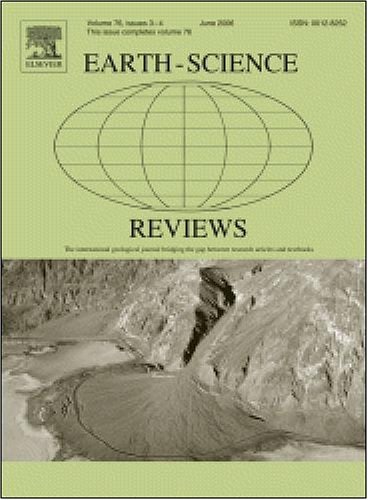Thrust and nappe tectonics in orogenic settings – A historical review
IF 10
1区 地球科学
Q1 GEOSCIENCES, MULTIDISCIPLINARY
引用次数: 0
Abstract
Thrust systems are important components of orogenic belts as they reflect the dynamics of thrust belt evolution and record information about crustal shortening processes in accretionary prisms. The current knowledge on this subject is the result of three centuries of research. Here, we review the evolution of thrust systems and related mountain-building processes from early field-based observations and experimental work to the arrival at our current body of knowledge.
We realize that even though the amount of available data increased dramatically in the last part of the 20th century, notably through hydrocarbon exploration drilling and seismic data acquisition, some of ideas and conclusions found in early studies are both relevant and impressive. The close connection between experiments and field observations exercised by the pioneers was an important key to progress. Field mapping in the late 1800s lead researchers to the conclusion that overthrusting involving up to 100-km-scale thrust displacements must have occurred during the formation of the Caledonides and the Alps. These pioneers knew that evidence and information were to be found from the study of rocks in outcrop. They accepted the field-based evidence for thrust tectonics, even though they had no tectonic model at hand that could explain such large-scale thrusting. This and similar historical examples underscore the everlasting importance of objective field observations, and of being willing to develop, change, and if so needed, reject existing models.
造山带背景下的逆冲和推覆构造——历史回顾
逆冲系统是造山带的重要组成部分,它反映了逆冲带的演化动力学,记录了增生棱镜中地壳缩短过程的信息。目前关于这个问题的知识是三个世纪研究的结果。在这里,我们回顾了冲断系统和相关造山过程的演变,从早期的野外观测和实验工作到我们目前的知识体系。我们意识到,尽管在20世纪后半叶,特别是通过油气勘探钻井和地震数据采集,可用数据的数量急剧增加,但在早期研究中发现的一些想法和结论既相关又令人印象深刻。先驱们进行的实验和实地观察之间的密切联系是取得进步的一个重要关键。19世纪后期的野外测绘使研究人员得出结论,在加里东尼德山脉和阿尔卑斯山脉形成期间,一定发生了超过100公里规模的逆冲位移。这些先驱者知道,从对露头岩石的研究中可以找到证据和信息。他们接受了以野外为基础的逆冲构造的证据,即使他们手头没有可以解释如此大规模逆冲构造的构造模型。这个和类似的历史例子强调了客观实地观察的永恒重要性,以及愿意发展、改变和在必要时拒绝现有模型的重要性。
本文章由计算机程序翻译,如有差异,请以英文原文为准。
求助全文
约1分钟内获得全文
求助全文
来源期刊

Earth-Science Reviews
地学-地球科学综合
CiteScore
21.70
自引率
5.80%
发文量
294
审稿时长
15.1 weeks
期刊介绍:
Covering a much wider field than the usual specialist journals, Earth Science Reviews publishes review articles dealing with all aspects of Earth Sciences, and is an important vehicle for allowing readers to see their particular interest related to the Earth Sciences as a whole.
 求助内容:
求助内容: 应助结果提醒方式:
应助结果提醒方式:


